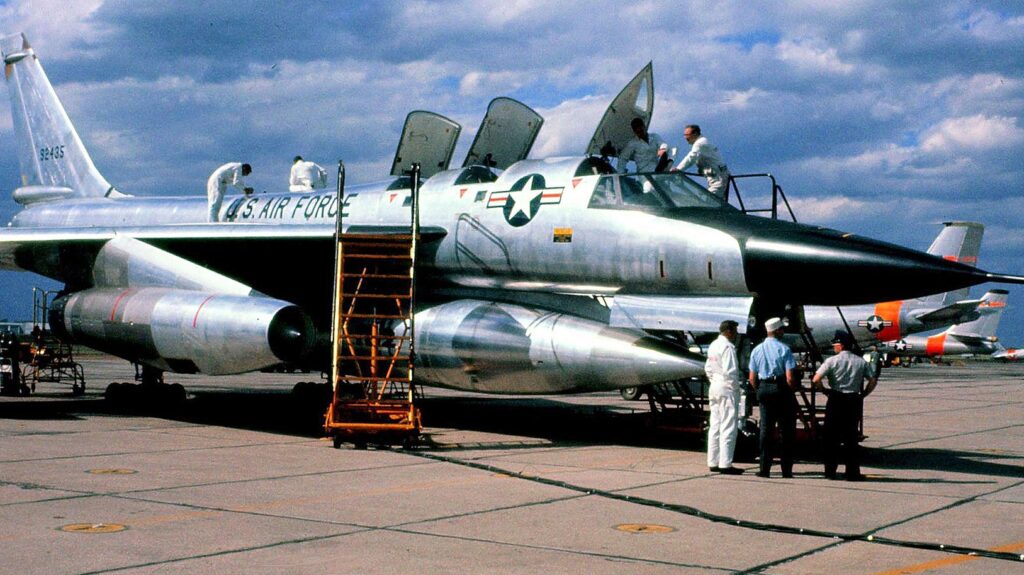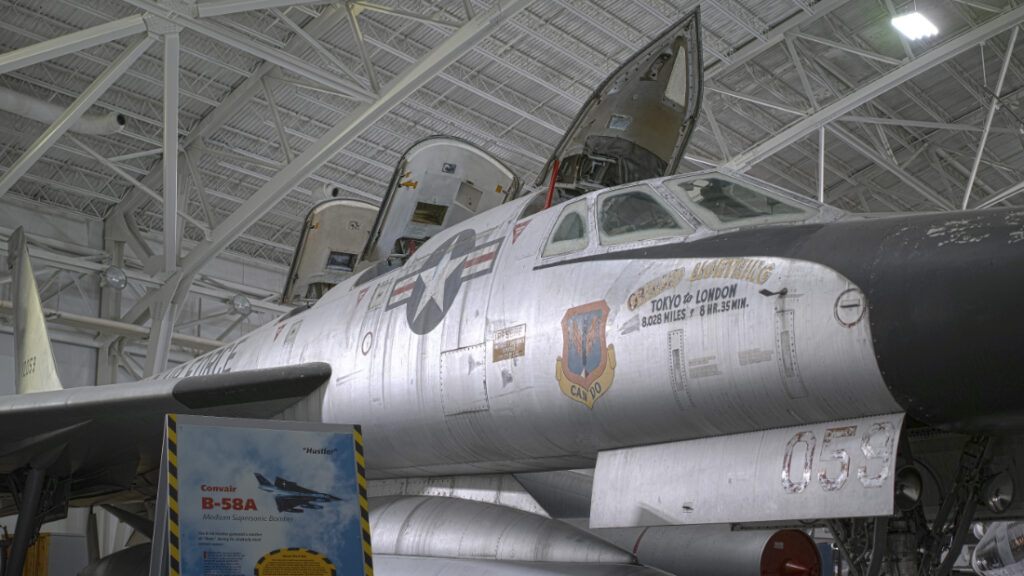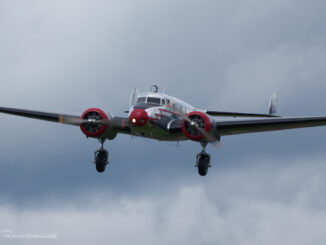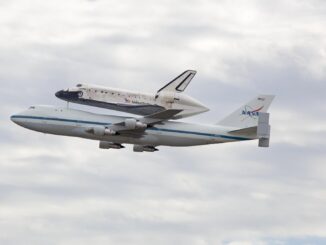 On 16th October 1963, a Convair B-58A Hustler supersonic bomber took-off from Tokyo, Japan and headed the United Kingdom. Eight hours, thirty-five minutes and 20.4 seconds later, the Hustler landed in London, performing the longest continuous supersonic flight in history and thus setting the new world record.
On 16th October 1963, a Convair B-58A Hustler supersonic bomber took-off from Tokyo, Japan and headed the United Kingdom. Eight hours, thirty-five minutes and 20.4 seconds later, the Hustler landed in London, performing the longest continuous supersonic flight in history and thus setting the new world record.
The idea of record-breaking supersonic flight was born earlier in the summer of 1963 at the Strategic Air Command (SAC). Among the reasons behind, there was a need to prove that, after the implementation period and initial maintenance issues, the B-58A is now a fully operational nuclear strike aircraft, worth all the money spent on its development. In addition, the SAC wanted to show its capabilities to both general public and to a potential enemy – the message was that, if needed, the SAC aircraft and their weapon can travel half of the world in just a few hours.
Several possible routes were examined and finally Tokyo to London flight was chosen. First of all, it was going though Alaska and therefore partially copying two usual alarm routes practiced by the USAF – ´Glass Brick´ to the Far East and ´Alarm Bell´ to Spain. Second, there was no problem with organizing aerial refuelling as the tankers were already flying both abovementioned paths and their bases were located along the route. And last but not least, there was a desire to break the record set on that course by an English Canberra bomber of the RAF that made it within nine hours in 1957.
Once decided about the route, the SAC commanders started a complicated and not easy process to get approval for their idea from the highest USAF command and US Department of Defense, as well as obtain consents for the flight from all the countries along the way. Finally, the project received a green light but under a condition the flight must be performed as usual training routine and without any additional expense. It meant no purposedly chosen crew, no extra training and no specially-prepared aircraft – all, including the support tankers and maintenance teams, had to participate in the record-breaking flight as it would be one of many usual training missions. The mission also received its code name – Greased Lightning.

Therefore, to follow the aforementioned condition, the only exception from usual routine was to increase the number of aerial tankers along ´Glass Brick´ and ´Alarm Bell´ routes, as it was expected that significantly higher amount of fuel would be necessary for such a long supersonic flight. In addition, some of the air tankers carried FAI observers on board, in order to officially authorize the potential record.
On 9th October 1963, one of the routine ´Glass Brick´ missions was launched. The Hustlers assigned to the 305th Bomb Wing departed Okinawa and made their usual flight over the Pacific – via Hawaii and Midway to Guam air base. Then they returned to Okinawa and, after refuelling and necessary maintenance, were ready for the second part of the training, the flight from Japan to Aleutian Islands and back. And exactly during that stage of training, two Hustlers were planned to receive a special order from the SAC to change the flight plan and to go to England via Alaska, Greenland and Iceland. The crews of the 305th Bomb Wing were aware of that new task, nevertheless none of them knew which aircraft it would be.
On 16th October, three Hustlers took-off from Okinawa for the second stage of the ´Glass Brick´ mission. However, this time the flight plan included an additional point – after refuelling, the bombers were scheduled to fly over Tokyo International Airport to be checked off by an FAI observer there. Then, they went supersonic, climbed to 50,000 feet and headed Aleutian Islands.
The archipelago was reached in less than six and a half hours of flight from Tokyo, including two air-to-air refuellings during the flight. At that point, the situation was examined by the SAC command and final decision was made – one of the B-58, that reported some technical issues with navigation system, was ordered to land at Eielson air base, Alaska; the second one was diverted to Chicago and, finally, the aircraft coded S-12 was allowed to continue to London.

Next air refuelling was scheduled to be performed over Anchorage, Alaska but due to bad weather conditions it turned into an extremally hard task and the record-breaking mission was not so far from being abandoned at that point. However, both the B-58 and KC-135 crews did their best and the flight could be continued. Another two rendezvous with the tankers were planned to take place over Greenland and Iceland. This time the weather was good and they were just another routine tasks.
At 14.34 hours, the FAI observer checked the B-58 off the gate in London. The B-58 made the 8,028 miles (12,920 km) long flight in 8 hours, 35 minutes and 20.4 seconds, with the average speed of 692.71 mph (1114.81 kph) – following the record data card of the National Aeronautic Association. It´s worth nothing that Tokyo to Anchorage stage was flown at an average speed of 1,093 mph (1,759 kph) and Anchorage to London at 827 mph (1,330 kph). The total average speed was lowered by air-to-air refuelling, when the B-58 had to slow down to approximately 500 mph.
The aircraft that set the record for the longest supersonic flight was Convair B-58A-20-CF Hustler, serial number 61-2059. It was flown by the crew of Major Sidney J. Kubesch (pilot), Major John G. Barrett (navigator-bombardier) and Captain Gerard R. Williamson (defensive systems operator). After the flight, the Greased Lightning nickname was assigned to the record-breaking Hustler. Nowadays, the aircraft is preserved at the Strategic Air Command and Aerospace Museum in Nebraska.
The record flight made by the Greased Lightning in category ´Speed over a recognized course´ for C-1 class of aircraft, remains still unbeaten.

Cover photo: Convair B-58A Hustler 59-2442, 29 June 1967 (illustrative photo). Unknown author, USAF photo via Wikipedia, Public Domain.



